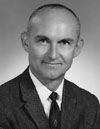Those with Parkinson’s use boxing to fight back
Published 12:00 am Friday, October 19, 2018

- Dennis Morgan of Batavia, Illinois, who was diagnosed with Parkinson’s disease in June, has seen the benefits of the Rock Steady Boxing program.(Denise Crosby/The Beacon-News/TNS)
FOX VALLEY, Ill. — I’ll admit, I wasn’t sure what to expect when I walked into the Fox Valley Park District’s boxing club on Oct. 6.
I was there to attend an open house sponsored by Jesse “The Law” Torres Boxing Club, but the gloved athletes who would be showing off their skills were far from typical.
The strongest opponent these boxers was facing is Parkinson’s disease, a condition that usually has a negative association with this high-impact and often brutally-tough sport.
Which is what made this assignment so intriguing. And surprising.
Neurosurgeon Dr. Gary Skaletsky, who conducted the open house, confessed to his own skepticism when he was asked this summer to volunteer his time as the coach and coordinator with Rock Steady Boxing — a national program that’s out to prove those with Parkinson’s show dramatic improvements by practicing noncontact boxing skills.
As he did more research, “I realized this made tremendous sense,” Skaletsky added. In the three months since he signed on, the doctor has become one of its most ardent fans.
Parkinson’s is a degenerative disease of the brain that attacks the nerve cells which produce the chemical dopamine. When those cells degenerate, it causes tremors, slowness of movement, muscle stiffness and balance problems, loss of automatic movement and soft or slurred speech.
But, as Skaletsky discovered, the techniques used in boxing “counter punch” those symptoms by improving agility, speed, muscular endurance, accuracy, eye-hand coordination, footwork and overall strength, not to mention cardiovascular function that in turn allows more oxygen into their lungs, which helps with voice projection.
“Cells attacked by Parkinson’s do not regenerate,” said Skaletsky. “But you have billions of cells in your brain, which means a new circuit can take over those functions and compensate for those cells that were lost.”
No one in the gym refers to these participants as Parkinson’s patients, by the way. They are “fighters with a disease,” Skaletsky announced nice and loud from the get-go. “This is how we treat them here. We don’t do checkers. We don’t do shuffleboard. We don’t do nice. We scream. We yell. We activate voices. We try to kick their behinds.”
And how do these athletes respond? “Not one person says ‘I can’t do it,’” Skaletsky said. Instead, they tell their coach to “give me something else to do.”
Five Parkinson’s fighters showed the audience just what they can do — first, by going through warmup exercises that, among other benefits, help improve balance.
“You can’t be in a fight if you are on your back on the canvas and someone is standing over you,” pointed out Skaletsky. “So we make sure we have a good wide stand so no one can knock you over. We reinforce muscle memory by doing things repetitively.”
After lacing up their boxing gloves, the five members of the group demonstrated their skills on the smaller speed bags, then on a variety of hanging heavy bags. They also impressed those on the sidelines by going through a fast-paced drill that had the team running and punching their way through a succession of bags, including ones attached to other bodies.
“When you hit back, hit and hit back, that reaction time is increasing,” said Skaletsky. While that does not necessarily mean those with Parkinson’s will be able to nail that punching bag “100 times in a row,” he noted, “all that memory is building up, and it means you can reach your fork at the dinner table and cut your steak.”
That is important because those with this disease often “don’t want to go out because they are looked at and judged,” said Skaletesky. “If you can build confidence, … then that is making progress in your life.”
Dennis Morgan, a musician and graphic artist who was diagnosed with Parkinson’s this summer, has only been training for a few months, but the family has already noticed a significant difference.
“We don’t see the tremors as much,” said wife, Carol.
“He’s more energized,” noted son, Matthew.
Active even before her 2003 diagnosis, Carol Auer says she’s become such a passionate supporter because this “tough but fun” workout regime “has kept the disease in check and made me stronger.”
After the gloves came off, the boxers went through some exercises designed to strengthen core muscles that included what Skaletsky described as “planks with a twist.” Perhaps the highlight of the workout was an elimination contest pitting two competitors against each other to see who could grab the orange cone the quickest.
It was no surprise that Randy Cagwin, one of the hardest working members of the group, took on all comers — with and without Parkinson’s — and came out the winner. Again.
“No one has been able to beat Randy yet,” said Jesse Torres board President Uni Comacho.
Turns out Cagwin, a Fox Valley Park District retiree who earned a black belt in karate before his diagnosis five years ago, is a longtime friend of Kiwanis leader John Ross, who saw Rock Steady as a way to help, and approached the boxing club about becoming an affiliate.
Cagwin is in stage three of the disease but credits Rock Steady with slowing down its progression. It has, he told me, “made me stronger” and “made a big difference with balance.”
Which is why, insisted Skaletsky, “this room should be packed” with Parkinson’s boxers.
“The sooner we can get them here, the smaller the mountain they have to climb,” the doctor said.
“I want them to be proud, be vital and say to Parkinson’s, ‘you may get me down for a little bit, but there are a whole bunch of rounds in this fight. And we will get you back.’”
Cagwin understands his opponent well. Which is why he refuses to be intimidated by it.
“I think of the bag as Parkinson’s,” he said as he pounded away. “And that just makes me want to hit it again and again.”





